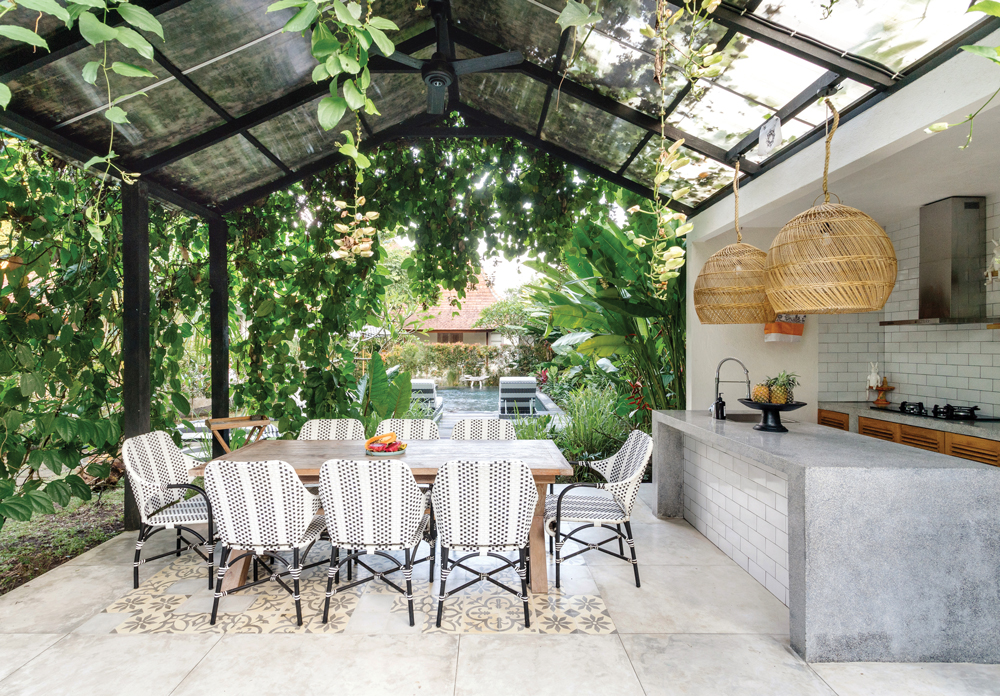
Many homeowners are installing full outdoor kitchens and dining areas. You can design your own based on lifestyle and budget. iStock image
Cooking outside no longer means grilling burgers over charcoal. Homeowners are now opting for full outdoor kitchens, whether for entertaining large crowds or changing the scenery for a family meal. It’s a great way to enjoy the great outdoors, especially in the scenic Highland Lakes.
“I call it outdoor living,” said Kurtis Singleton, owner of Singleton Enterprises in the Highland Lakes, which designs and installs outdoor kitchens among other home improvement projects. “Outdoor living is being able to enjoy the outdoors every day. It benefits your family life.”
Here are five things to consider when building an outdoor living space.
1. What's its purpose?
What exactly do you want to do outside? What do you need to be the most comfortable?
For Singleton, that means watching TV, even in the winter, when he lights up an outdoor fire pit to keep warm and add to the ambiance.
2. What's the setup?
How do you want to cook: charcoal, natural gas grill, propane barbecue, stovetop, or all of the above? Do you need a bar or refrigerator? What about a sink and space for a sealed garbage can? (Think raccoon-proof.)
Also consider child safety, how much food prep you want to do outdoors, and how BIG you want appliances, which can be determined by how many people you plan to entertain at any one time.
3. Tables and design tastes
Eating outside is another big question. If everyone is going to gather around an outdoor table, you have to decide how big and whether you want wood, glass, metal, or whatever.
Rustic designs are the most popular in the Highland Lakes. Decorative touches and furniture complement and blend with the landscape and the look of the home. Outdoor living areas can be designed to fit individual tastes and lifestyles.
4. Make it mobile
Even renters can put in outdoor kitchens. Make them mobile so you can move your workspaces and appliances with you. That could include detached grills and counters on wheels.
5. What's your budget?
If cost is your main obstacle, that can be handled with a tightly watched budget. Put the amount you're willing to spend at the top of your planning page. List the items you will need to buy and start your research.
If the budget is tight, list the cheapest models that fit your need first and then add up the total. If it’s over budget, look at what you can cut back on first. You might find that research will lead you in whole new directions for an even more innovative outdoor living space that better fits your needs at a cost you can afford.
editor@thepicayune.com











